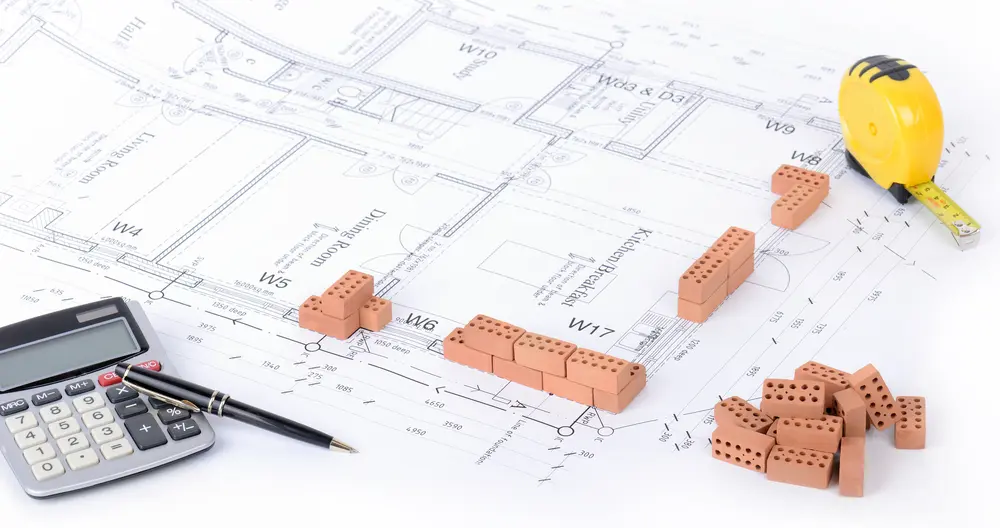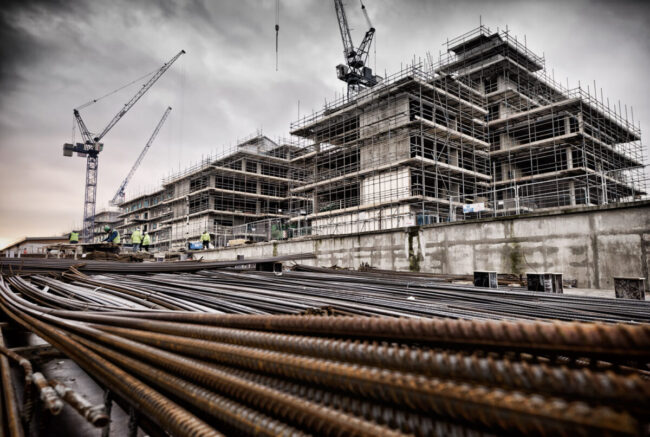
Starting a large-scale construction project is a lot like preparing for a competitive season. You don’t just roll out onto the field and hope for the best – you analyze your stats, study your opponents, and get the roster ready.
The same mindset applies when you’re about to pour concrete, raise steel, and commit to months (or years) of building. The early preparation often decides whether the project is a win or a costly setback.
1. Setting Goals and Defining the Scope
Imagine a coach telling his players, “Just go play,” without giving a formation or a strategy. The result would be chaos. That’s exactly what happens when a construction project begins without clearly defined goals and scope.
Before you bring in an architect or contractor, spend time writing down what the finished project should achieve. Is it an expansion of a facility, a completely new structure, or an infrastructure upgrade? You’ll also want to separate essentials from optional features. That way, when budgets get tight or conditions change, you know where to adjust without losing sight of the main goal.
In practice, this means laying out not just a drawing of the building, but also:
- Primary needs: spaces or functions the project cannot do without.
- Secondary features: items that would add value but could be cut if necessary.
This hierarchy helps keep everyone – from designers to subcontractors – aligned.
2. Budgeting Beyond the Basics
Every fan knows the scoreboard tells only part of the story. Behind it are missed shots, fouls, and turnovers that shaped the game. In construction, the budget is your scoreboard, but the “turnovers” are hidden costs that can suddenly flip the outcome.
It’s not enough to calculate how much cement, steel, and labor will cost. You need to be aware of everything else that sneaks in. For instance:
- Permit fees and inspections are often overlooked but unavoidable. Cities rarely let projects move forward without multiple approvals.
- Utility connections and infrastructure improvements can add major expenses if your site isn’t already equipped.
- Waste disposal and environmental compliance may come with extra hauling, recycling, or treatment costs.
- Insurance and legal protection safeguard the project but come with premiums that vary based on size and complexity.
This is why it’s smart to set aside 10–15% of the total project cost as a contingency fund. Think of it as keeping a few players on the bench who can step in when the unexpected happens.

3. Site Preparation and Access to Essentials
A stadium without water or electricity wouldn’t host a single game. The same is true for a building site. Before construction begins, you need to confirm that the site can support the utilities your project demands.
One overlooked issue is water supply. If your site is in an area where municipal access is limited, you may need specialized solutions like perforacion de pozos profundos de agua (drilling of deep water wells). Securing a deep well means your project won’t stall from the most basic resource shortage.
In addition to water, think about:
- Electricity: is there a nearby grid connection, or will upgrades be required?
- Sewage and drainage: improper planning here leads to long-term headaches, not just during construction but throughout the life of the building.
- Internet and communication lines: increasingly essential for both modern buildings and for coordinating teams during the build itself.
Treat these checks as part of your pre-game warm-up. If the basics aren’t covered, the entire performance suffers.
4. Legal and Regulatory Approvals
Every sport has rules, and every project has permits. If you skip this part, you might be forced to stop halfway, no matter how much momentum you’ve built. Different regions impose different requirements, from zoning laws to environmental clearances.
Instead of waiting for a red flag mid-project, involve a consultant early. Their role is like a referee who keeps the game fair – making sure everything complies with regulations so you can focus on execution. The upfront investment in legal advice often prevents costly delays later.

5. Building the Right Team
When I track basketball stats, I pay as much attention to assists as I do to points. Why? Because chemistry between players is what wins games. Construction projects are no different. You need professionals who know their roles and work well together.
That usually includes:
- Architects who translate vision into plans that actually work on the ground.
- Engineers who make sure the structure is safe and efficient.
- General contractors who keep the schedule moving.
- Specialized subcontractors for tasks like plumbing, electrical, or finishing.
The cheapest bid isn’t always the best option. Look for a proven record of finishing projects on time, within budget, and with satisfied clients.
6. Timelines and the Reality of Delays
Even the best teams drop a game or two in a season. Similarly, even the most carefully planned project will face delays. Weather, supply chain shortages, or labor strikes can all throw your timeline off.
The solution is not to pretend everything will go perfectly, but to build in flexibility. For example:
- Add buffer weeks into your schedule.
- Track progress through smaller milestones, not just the final completion date.
- Have secondary suppliers or backup strategies ready if something fails.
This way, delays don’t destroy the whole season – they become manageable adjustments.
7. Safety and Risk Management
In sports, no team lasts long if injuries pile up. Construction sites are the same: safety is the foundation of consistent performance. Hard hats, harnesses, and protective gear are the visible part, but true safety comes from training, protocols, and awareness.
You should also think about risks beyond the obvious accidents. Heavy machinery breakdowns, exposure to extreme heat or cold, and environmental hazards all need a plan. A strong safety culture means fewer interruptions, healthier workers, and ultimately, a smoother build.

8. Keeping Everyone in the Loop
Good teams huddle, adjust, and stay in sync. In construction, that means communication. Weekly meetings, shared reports, and digital project management tools can make sure no detail slips.
Think of it like real-time stat tracking in sports. If a coach sees his team shooting poorly from three-point range, he changes the play. If you see tasks falling behind schedule, you adjust resources. The ability to make these calls quickly depends entirely on how clear your information flow is.
9. Planning for the Aftermath
The final whistle doesn’t mean the season is over. There’s off-season training, recovery, and preparation for the next round. For construction, this translates into maintenance.
You’ll need to plan for inspections, equipment servicing, and potential upgrades. Many owners skip this, only to find themselves paying higher costs later when systems fail. Building for the long term means treating completion as the start of a new phase, not the end of the journey.
Closing Thoughts
Big construction projects require the same mindset as competitive sports: discipline, preparation, adaptability, and teamwork. If you establish clear goals, budget beyond the surface, secure essential resources, and surround yourself with the right people, you dramatically increase your chances of a successful outcome.
The projects that thrive are the ones where the team knew the game plan, adjusted to the unexpected, and stayed focused until the final buzzer.
